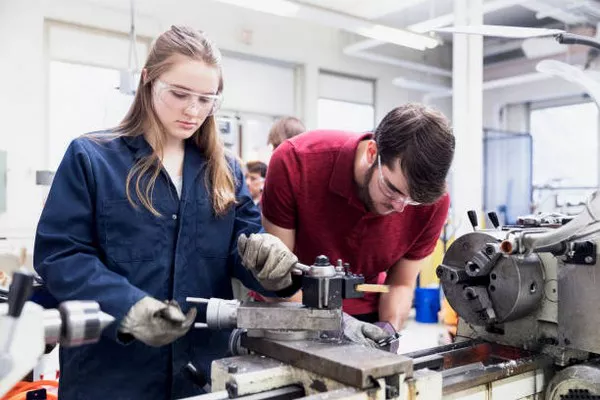New workforce data from EngineeringUK reveals a worrying trend: the proportion of women in engineering and technology roles has declined over the past year, dropping from 16.5% to 15.7%. This is in stark contrast to the broader UK workforce, where women represent over half (56.1%).
Further analysis shows that the decline is particularly concentrated among women aged 35 to 44. Registration data from the Engineering Council indicates that the average age of women leaving the profession is 43, compared to 60 for men. This pattern of women exiting their careers early is not observed in other professions.
The data, part of EngineeringUK’s annual review of the engineering workforce, is expected to prompt engineering and technology companies to reassess their recruitment and retention practices.
Hilary Leevers, Chief Executive of EngineeringUK, emphasized the seriousness of the decline. “Behind the percentages are professional women with real lives and careers. The sector needs to better understand why women are leaving and work harder to improve retention, including creating opportunities for those who have left to return,” Leevers said. She also highlighted the importance of government skills taskforces incorporating retention strategies into their plans.
Despite the decline, there are positive signs. In 2023, more women entered engineering and technology occupations in the 16 to 34 age group, indicating a growing interest from younger women. Leevers stressed the need for a dual approach: inspiring and recruiting more young people into the field while also retaining their talent and experience.
Leevers urged business leaders to review and improve their own recruitment and retention practices, pointing to organizations like WISE, WES, Equal Engineers, and the Royal Academy of Engineering as valuable resources for promoting inclusion and equity in the profession.
EngineeringUK also highlighted examples of good inclusion practices within the industry. Rebecca Crowther, Diversity and Inclusion Lead at global engineering firm AtkinsRéalis, noted their “Career Deflection Report” from 2022, which addressed issues faced by women leaving the profession at twice the rate of men. The report led to significant changes within AtkinsRéalis, including flexible bank holidays, enhanced parental leave, and targeted training for women at all levels.
Siemens has also committed to progressive recruitment policies, aiming for at least 30% of women in top management positions by the end of 2025. Carl Ennis, CEO of Siemens in the UK and Ireland, underscored the importance of diversity for addressing global challenges. “Improving gender balance is vital for the success of organizations across the board. The sector needs to accelerate efforts and not rest on its laurels,” Ennis stated.
Detailed Data Highlights
Women in Engineering and Technology (2022-2023): The proportion dropped from 16.5% in 2022 to 15.7% in 2023.
Total Number of Women: There were 1,034,000 women in 2022, compared to 996,000 in 2023.
Age Distribution: There are more women aged 16 to 34 entering the workforce, but fewer women aged 35 to 64, indicating issues with retention.
Comparison with Other Occupations: Women make up 56.1% of the workforce in non-engineering roles, compared to just 15.7% in engineering and technology.
Retention Issues: The decline in women aged 35-64 in engineering and technology is not seen in other sectors, where retention has remained stable.
This data serves as a critical wake-up call for the engineering and technology sectors to implement robust strategies for improving gender diversity and retention, ensuring that the industry benefits from the full range of talent and perspectives available.

